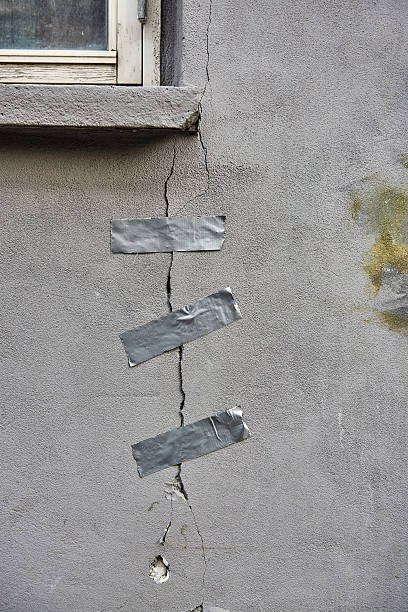Last Updated on January 15, 2024 by Brian Beck
Take a good look at the picture above. Have you ever seen someone trying to repair concrete with duct tape? I mean they’re both really great products, don’t get me wrong but they don’t really jive together very well if you know what I mean. This is a representation that I’m using to convey the efficiency of most people’s approach to soil health in regards to turf lawns. Obviously you realize by now that I’m going to say something that is less than positive. Okay guys don’t let your ego take a hit right now please listen to me because I’m about to save you an atrocious amount of money if you factor this in over the next 10 years. I really hope that you’re not going to cave and put in rock and contribute to urban heating, so I’m going to assume that you are a grass enthusiast and you don’t like playing football on river rock or playing fetch with the dog on a bunch of riprap, not cool. Okay if you’ve made it this far I want to guess that you’re pretty serious, so let’s press on.
Let me sum this up as briefly as possible. I really can’t put this on a bumper sticker as most people in our society would like me to do, it does bear some explanation so I’ll try to refrain from writing a book but I really want to drive a point across that most people are missing because they’re grossly misinformed about how to take care of the lawn. I struggled for over 20 years to figure this out so please for goodness sake listen up.
This is largely going to be written to the community up and down the front Range of Colorado but the basics apply anywhere where you’re going a plant and soil. Colorado believe it or not used to be a temperate rain forest many moons ago, then the volcanoes came and changed everything along with the retreating glaciers to the north left much of the front range deeply underwater. The transformation of our environment into an arid climate happened sometime later and left us with the environment that we are familiar with today. There is a lot of geological history that can be observed in our soil from this activity, namely calcium deposits. If anyone ever says we have a calcium deficiency here they are lying through their teeth we have an abundance of it. Anyway, that’s beside the point what I’m getting at is that we really have bad soil here and everyone is trying to grow things and it all while using synthetic fertilizers which are destroying the soil making the whole equation incredibly efficient, typically wasting untold amounts of dollars in water expense. There is however a silver lining to this tale. The soil can be corrected and the pH that disallows nutrients from getting into the plant properly and the largely in organic soils which cannot hold any water and the terribly deficient amount of microbial life in the soil because of the use of synthetic fertilizers makes it really really uncool sometimes I have a lawn. Once these factors are addressed hopefully with a soil test, which pays for itself many times over, you can begin to identify specific problems and move in a targeted manner to correct these factors and make the whole equation much simpler and a lot easier on your pocketbook. There is the hard way and there is the really really easy way to maintain the lawn and trust me most people are doing it the really really hard way which is ultimately unsustainable. If you want to save money and have a more efficient lawn please take a look at the biological method. Not only can you get away from toxic chemicals which are largely unnecessary you can store a lot of water in the soil and literally/year expenditure of unnecessary inputs. Remember the whole point of plant efficiency is getting resources into the plant as quickly as possible and eliminating as many barriers that prevent this from occurring as possible.
For more information click the link below and find out what it takes to have a biological on this year in 2024.

